biomimicry
Latest

Samsung hopes to 'copy and paste' the brain to 3D chip networks
Samsung says it has developed an approach that would 'copy and paste' a brain's neuron map to 3D chip networks — if and when the technology is ready.
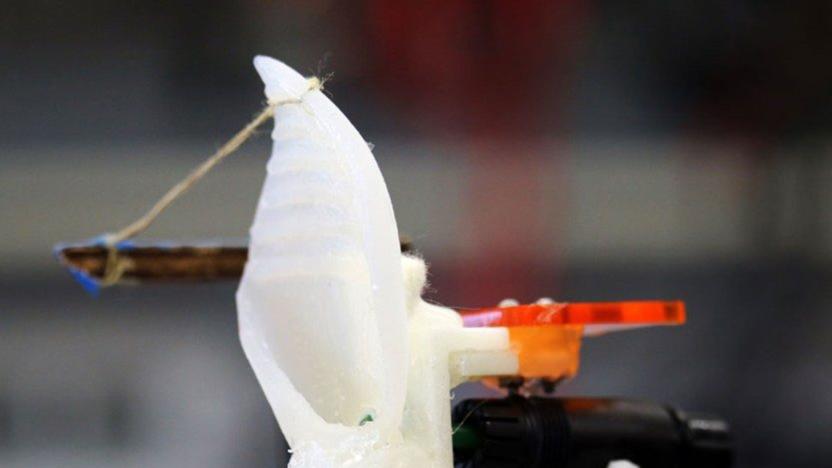
Sound location inspired by bat ears could help robots navigate outdoors
Researchers have developed bat-inspired, AI-guided sound location that could help robots navigate outside.

Insect-like drones can take a beating and keep flying
Researchers have built drones whose insect-like agility and toughness helps them fly through tight spaces — and take some punishment, too.
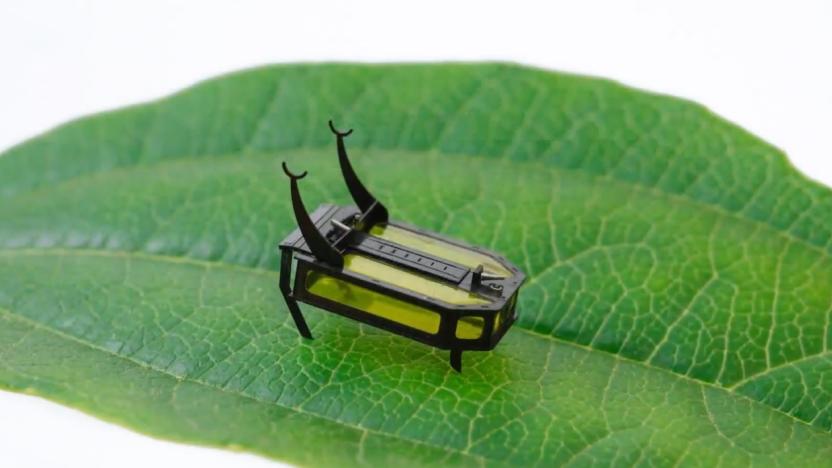
This tiny robotic beetle travels for two hours without a battery
This tiny, autonomous robotic beetle runs on liquid methanol.
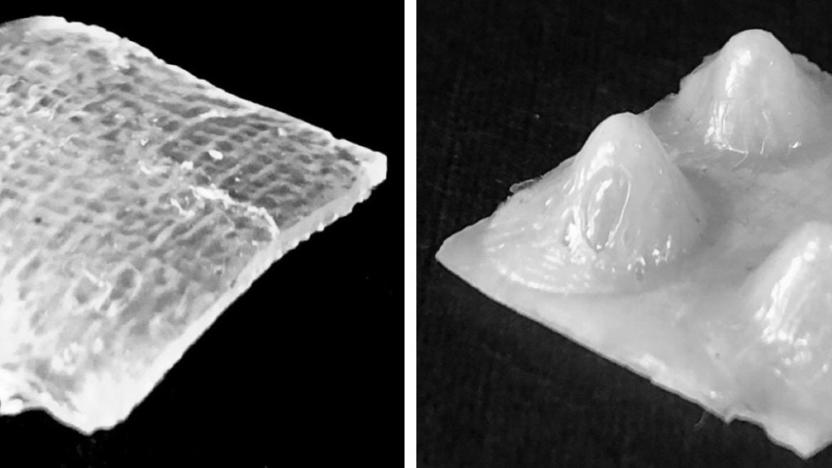
New 3D printing technique could make shapeshifting robots more practical
Scientists have developed a 3D printing method that could make shape-changing soft robots more practical.

Scientists create a cyborg eye that mimics the real thing
Scientists have created a biomimetic artificial eye that could one day be powered by sunlight.
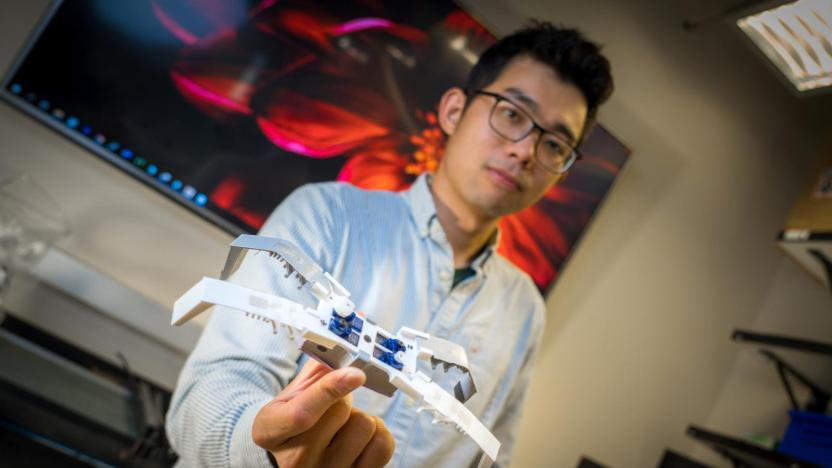
Scientists can 3D print insect-like robots in minutes
3D-printed 'flexoskeletons' make it possible to build a soft robot in less than two hours without extravagant costs.
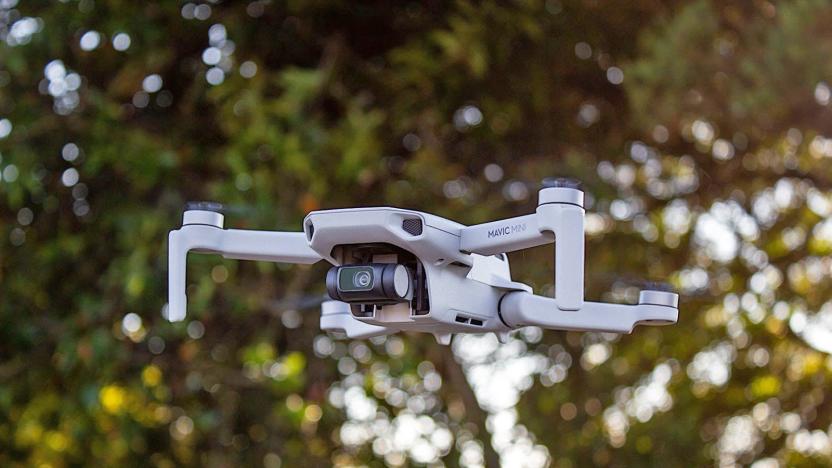
Drones can navigate like bats using four mics and a speaker
Bats can find their way in the dark using echolocation, so why can't drones? Researchers have managed just that. They've developed a system that lets a drone navigate using just four microphones and a speaker. It relies on the familiar concept of measuring distance by generating echoes, but uses an algorithm based on communicative algebra that 'echosorts' to determine which distances represent given objects. It won't produce "ghost walls" that leave the drone afraid to move.
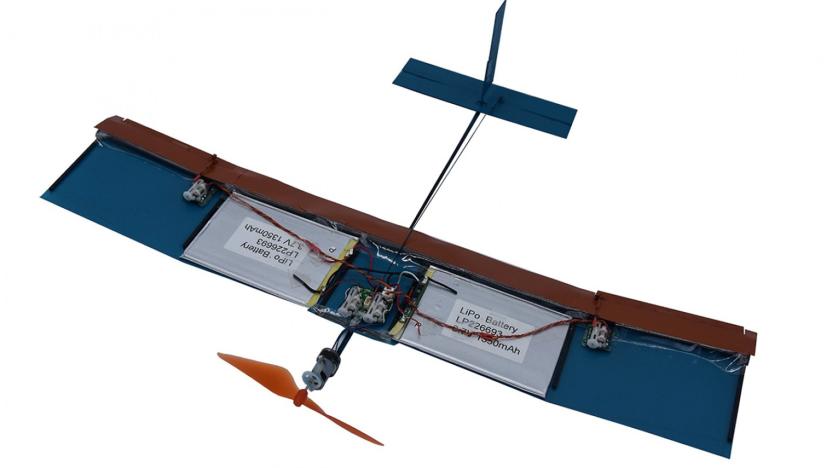
Bird-inspired wings could help small drones fly four times longer
Small drones seldom last more than half an hour in the air due to their inefficiency. They frequently have short, thick wings that help them survive wind gusts, but are terrible for range. However, scientists might have a way to make drones last: borrow another cue from nature. Researchers at Brown University and EPFL have developed a bird-inspired wing design that can deliver just under 3 hours of flight for a tiny 100g (3.5oz) drone, four times what you'd get from comparable fliers, without sacrificing stability. Effectively, it recognizes that common wisdom surrounding wings doesn't apply when the wingspan is a foot or less.
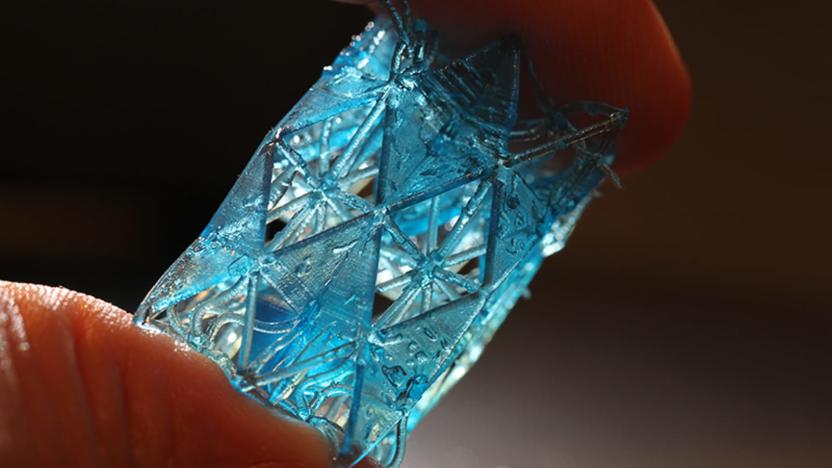
Researchers create bone-inspired 3D-printed building materials
You may not think of your bones as buildings, but researchers do. A team from Cornell University, Purdue University and Case Western Reserve University believes that by studying the internal structure of bones, they may be able to 3D-print stronger construction materials for homes and buildings.
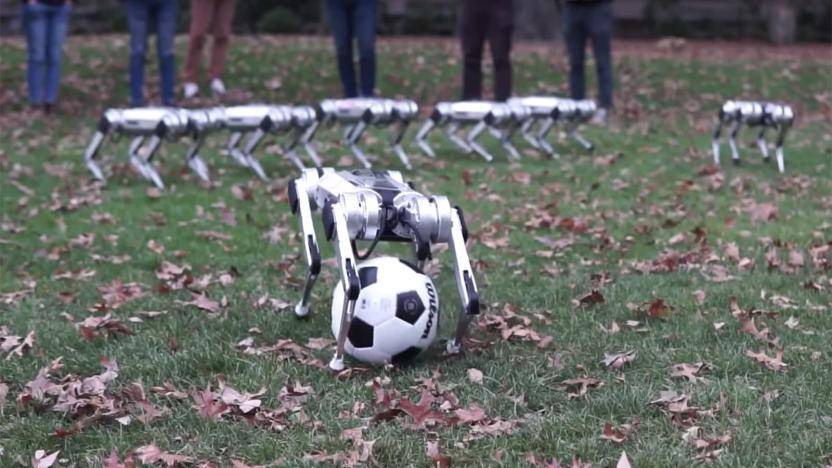
Watch a herd of MIT's Mini Cheetah robots frolic in the fall leaves
MIT wants to show that its Mini Cheetah robots aren't just solitary creatures. The school's Biomimetics department has posted a video of nine of the bots frolicking in the fall leaves, showing just what these pet-sized quadrupeds can do. The remote-controlled machines can backflip out of leaf piles, kick a soccer ball and have friendly tussles... well, if a bodyslam can be considered friendly. There's even some eerie coordinated dancing, in case you want to know how robots will socialize once the robopocalypse is over.

Robot bees can crash into walls without taking damage
Tiny robotic fliers aren't exactly durable at present, but they may be tough critters before long. Harvard researchers have developed a RoboBee that uses soft, artificial muscles (really, actuators) to fly without taking damage. The robot can smack into walls, crash-land or even collide with fellow 'bees' without getting hurt. Soft-muscle fliers have existed before, but this is the first with enough power density and control to hover -- that is, it's not just flying wildly.
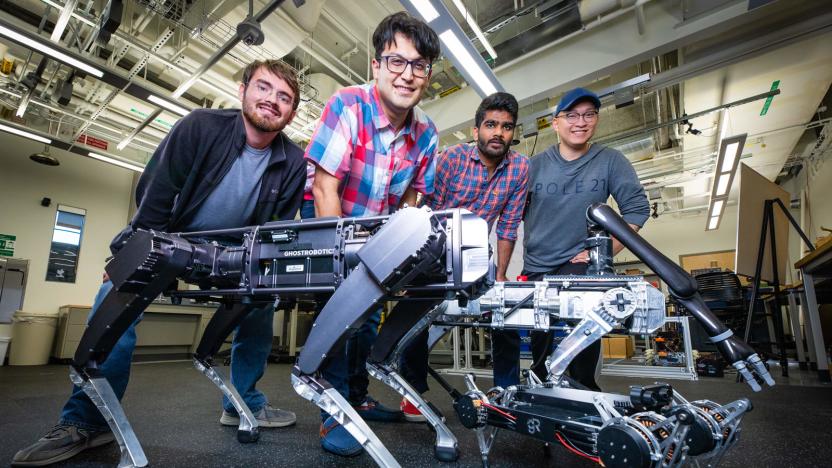
Algorithms help robot dogs trot more like real animals
Robot dogs can move efficiently, but not all that naturally -- and no, twerking doesn't count. Virginia Tech researchers think they can do better. They're developing a combination of algorithms and sensors that help robots move with gaits more like those of real animals. The system mimics the behavior of vertebrates, whose balance control comes largely from oscillating neurons in the spinal cord, using a combination of encoder sensors (to read relative positions for joints) and inertial measurement units (to measure the body's orientation relative to the ground). The result is a mechanical canine that can walk, run and trot with more grace and speed than usual.

Synthetic fiber 'muscles' could lead to brawny robots and prosthetics
Most attempts at giving robots muscles tend to be heavy, slow or both. Scientists might finally have a solution that's both light and nimble, though. They've developed fibers that can serve as artificial muscles for robots while remaining light, responsive and powerful. They bonded two polymers with very different thermal expansion rates (a cyclic copolymer elastomer and a thermoplastic polyethylene) that reacts with a strong pulling force when subjected to even slight changes in heat. They're so strong that just one fiber can lift up to 650 times its weight, and response times can be measured in milliseconds.

Fungus headphones offer a glimpse at the renewable future of electronics
It turns out headphones are the perfect product to showcase the potential for growing electronics. The typical set has a mix of plastic, leather and mesh -- not the most environmentally friendly ingredients. To prove that we could swap those out for yeast, mushrooms and other microbe-grown materials, Finish design studio Aivan created headphones made from bioplastics and microbe derivatives.

Researchers say 'spidey senses' could help self-driving vehicles avoid hazards
Researchers want to give cars, planes and drones "spidey senses." That is, they want to give autonomous machines sensors that mimic nature. In a paper published in ACS Nano, a team of researchers -- from Purdue University, Nanyang Technological University in Singapore and ETH Zürich -- propose integrating spider-inspired sensors into the exterior of autonomous machines. Doing so, they say, would allow vehicles to selectively process data faster than currently possible.
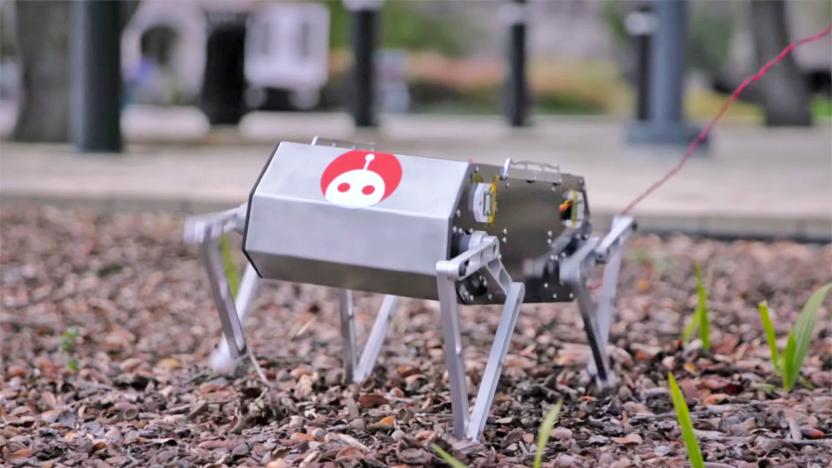
Stanford students' robot dog does backflips for (relatively) cheap
Robots with dog-like talents are nothing new, but it's not exactly practical to buy one that can do more than the basics. The new Aibo is cute, for instance, but not very athletic. A group of Stanford students might have a better solution. They've created Doggo, a four-legged bot that can dance, backflip, jump and trot without requiring exotic hardware. The mechanical canine is made of readily available supplies that achieve the intended acrobatics at minimal cost -- less than $3,000. Instead of using springs to bounce around, it uses force-sensing external motors that continuously determine the levels of force and torque needed for each movement. If the robot's ever out of position, the motors are ready to counteract.
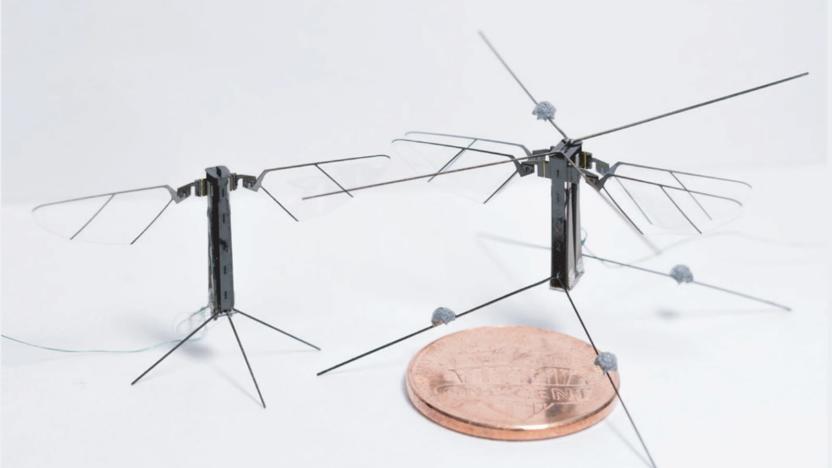
Scientists create a four-winged robot insect that flies with grace
It's difficult to make an insect-like flying robot -- realistic four-winged bots are typically too heavy, while lighter two-winged models tend to fly erratically. USC researchers have edged one step closer to the dream machine, however. They've created Bee+, a four-winged bot (pictured at right) that flies with more of the agility and poise of real insects while weighing just over 0.003oz. The trick was to drop earlier bimorph actuators, cantilevers made of two layers of piezoelectric material with a passive layer in between, with unimorphs that only have one piezoelectric layer. The four actuators combined weigh half as much as bimorphs would at just under 0.002oz, reducing the wing loading and significantly improving control.

Shrimp-inspired robot claw could punch through rock
Shrimp may be small, but some of them can pack quite a wallop. One of the pistol shrimp's claws, for instance, delivers such an explosive amount of force that it creates a shockwave of superhot plasma that can take out prey or create impromptu shelters. It only makes sense, then, that scientists hope to harness that power. A team has developed a robot claw that mimics the pistol shrimp's basic behavior to generate plasma and, potentially a valuable tool for underwater science and industry.

MIT robot's flytrap gripper can grab both fragile and heavy objects
Robot hands tend to skew toward extremes. They can pick up delicate objects or heavy objects, but rarely both. MIT CSAIL's solution? Avoid hands altogether. Its researchers have developed a Venus flytrap-like gripper that can grab objects as fragile as a grape, but also items 100 times its weight -- even if they're oddly shaped. The trick relies on a combination of clever physics with brute force.

